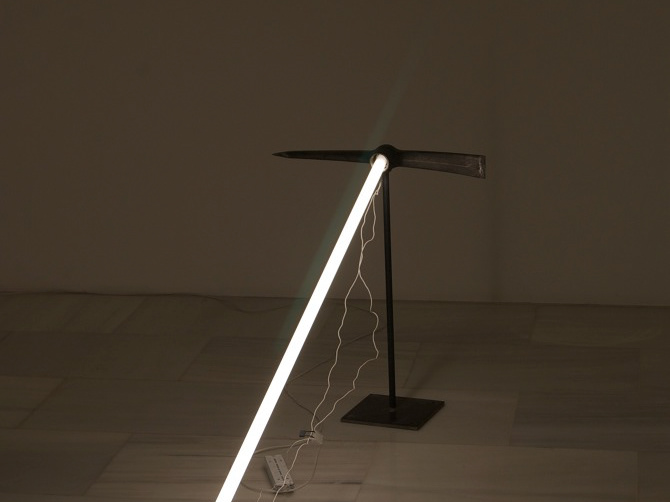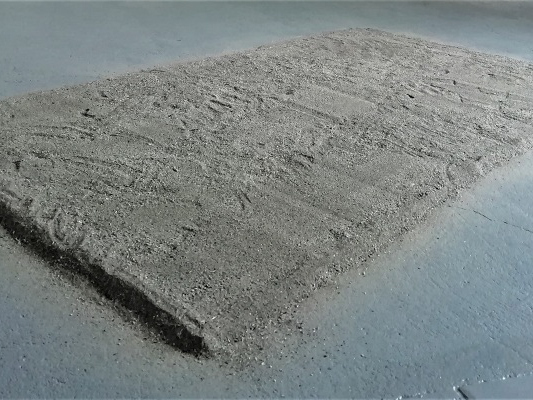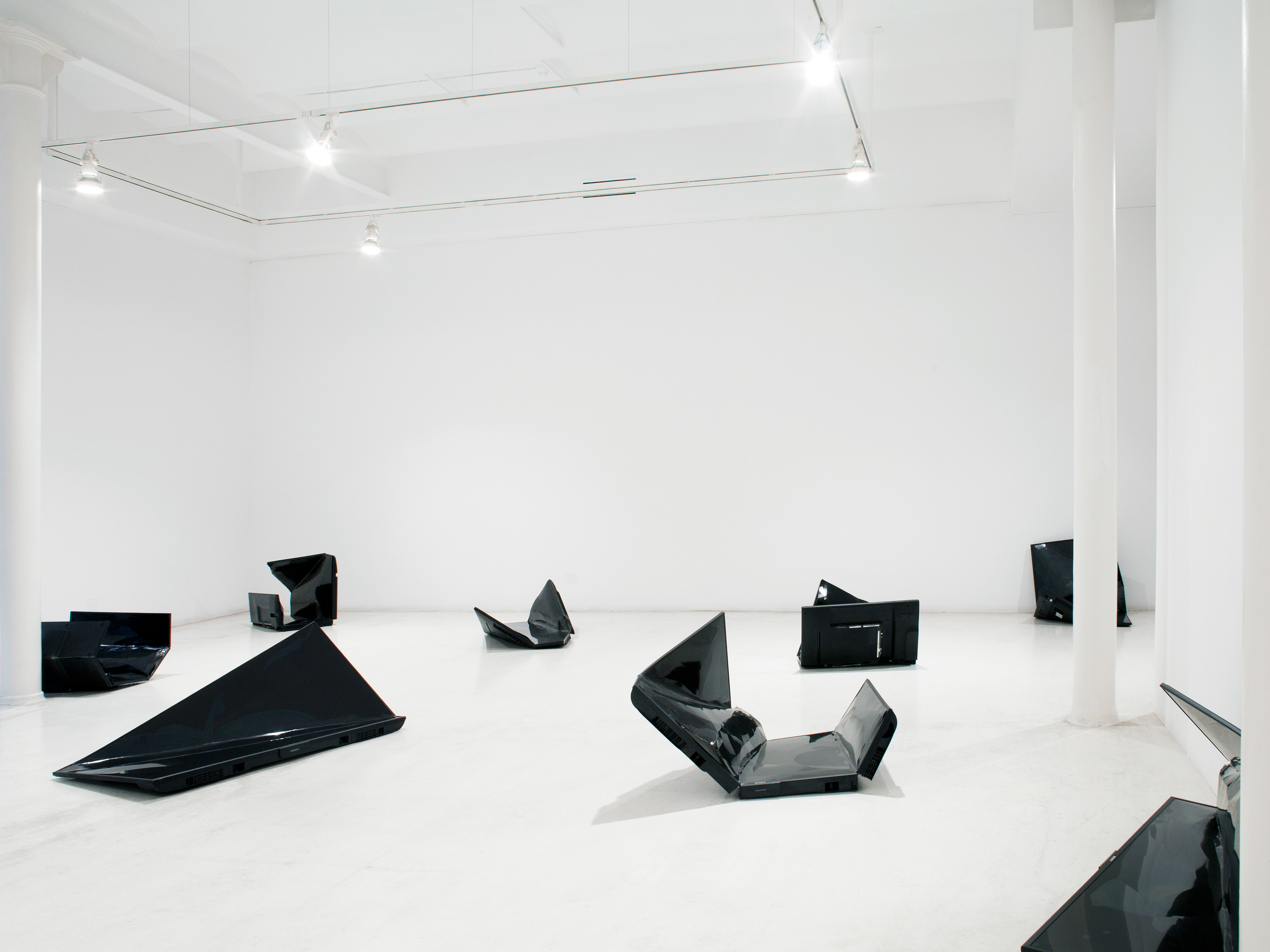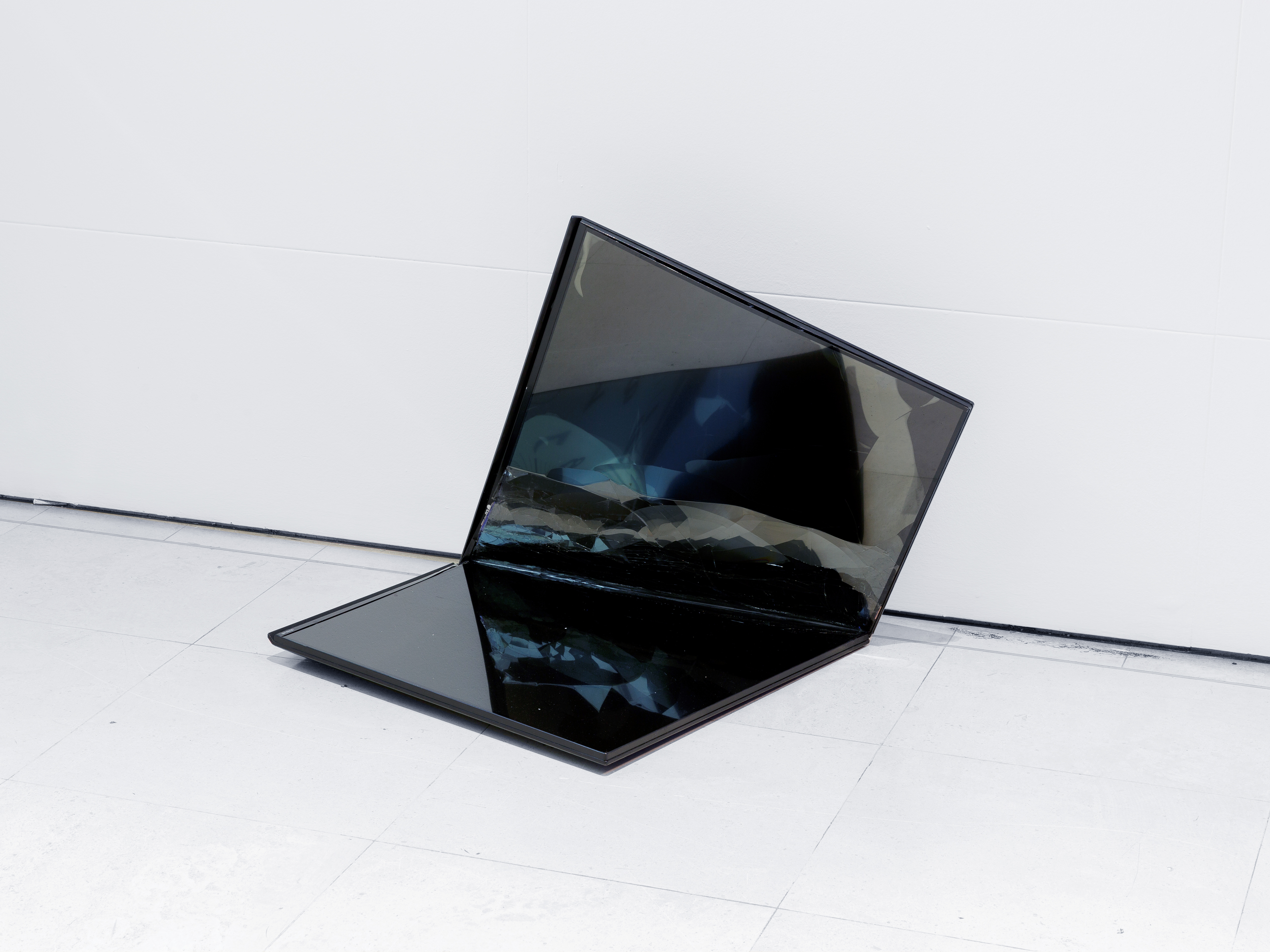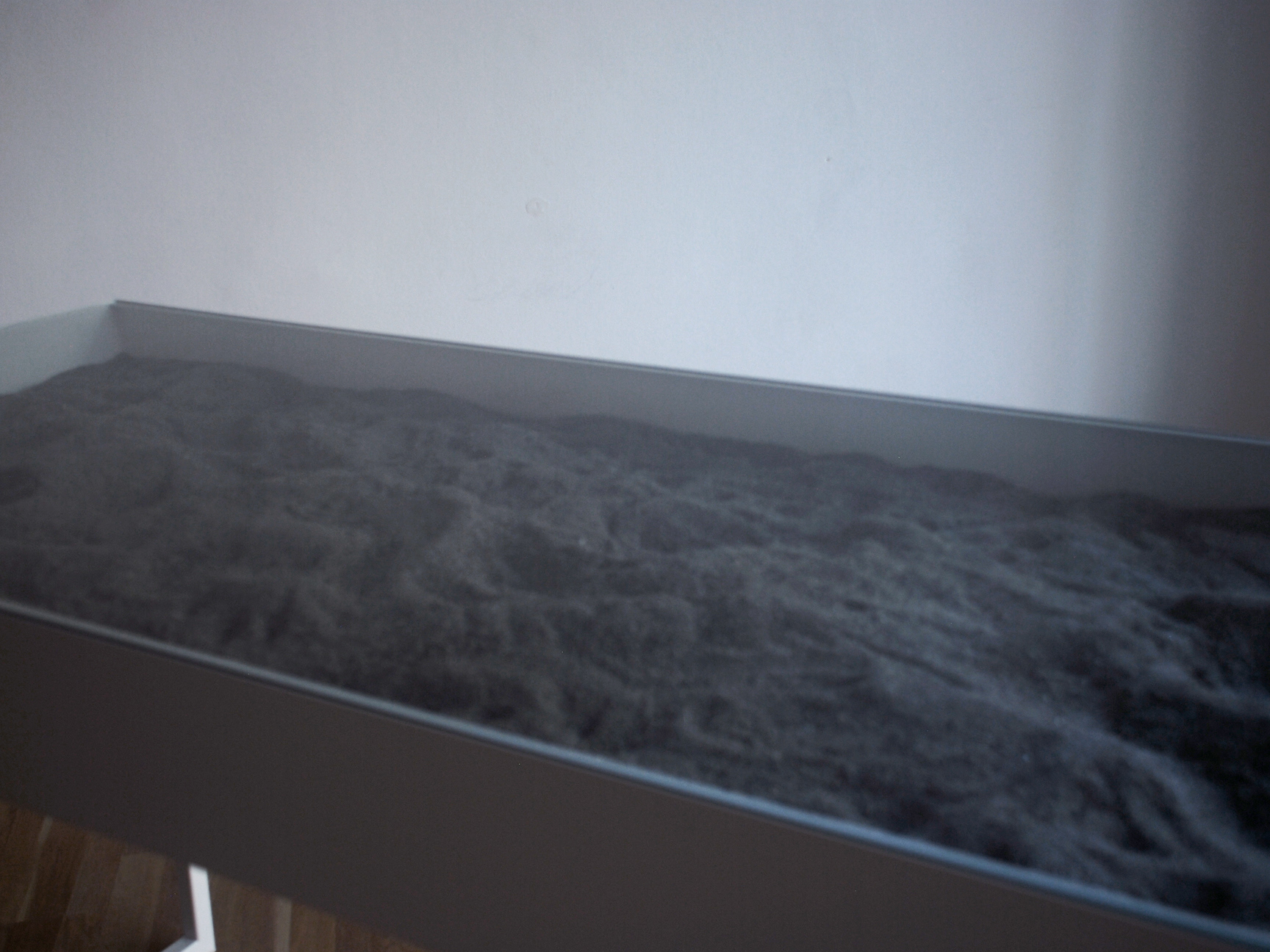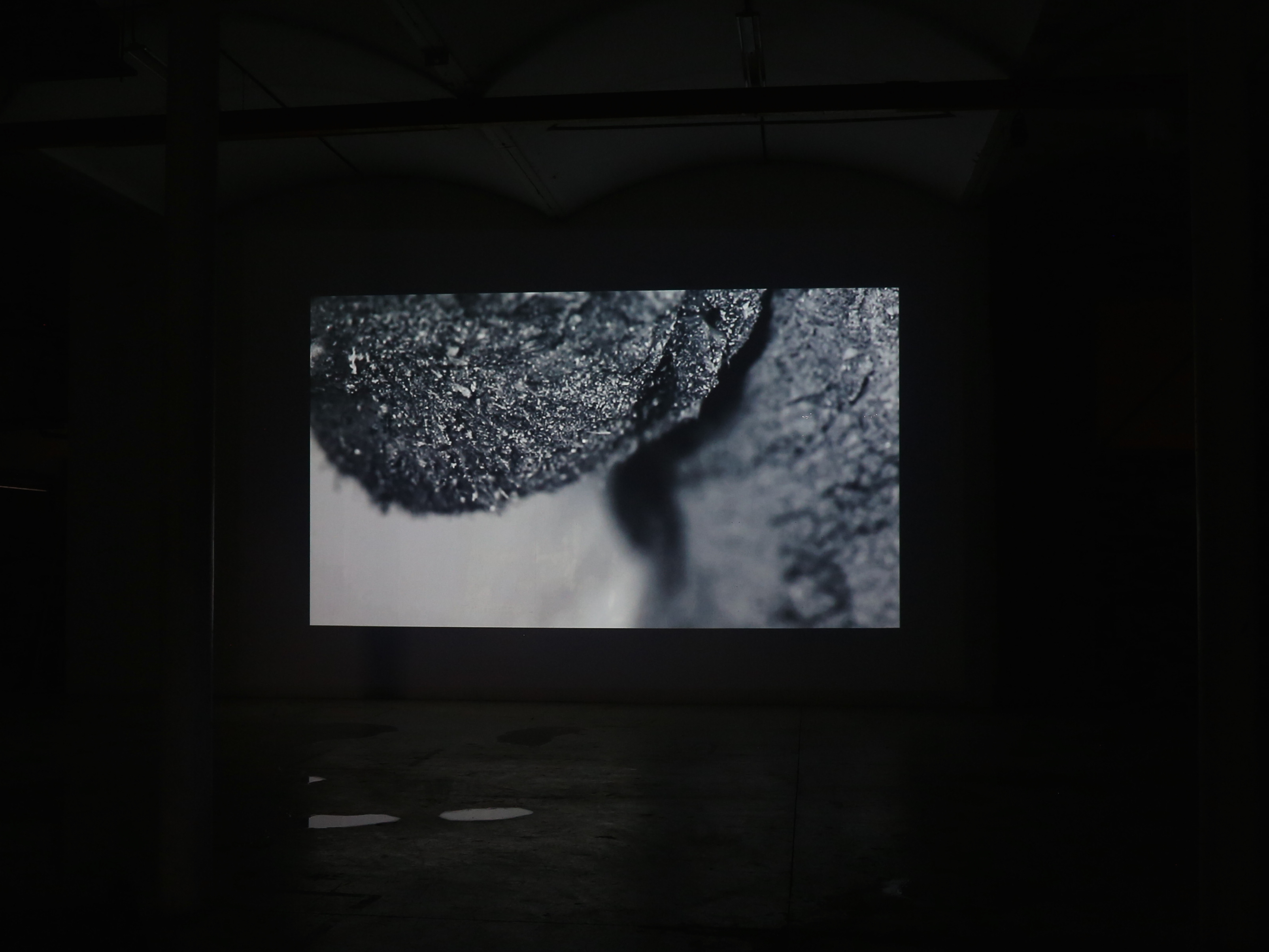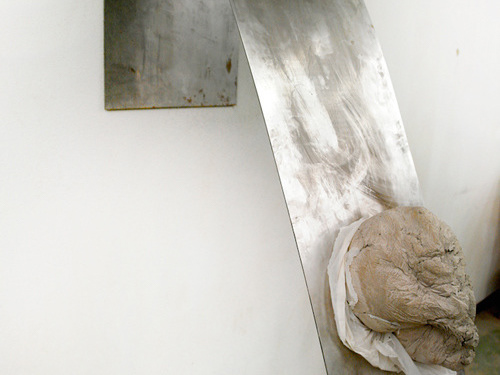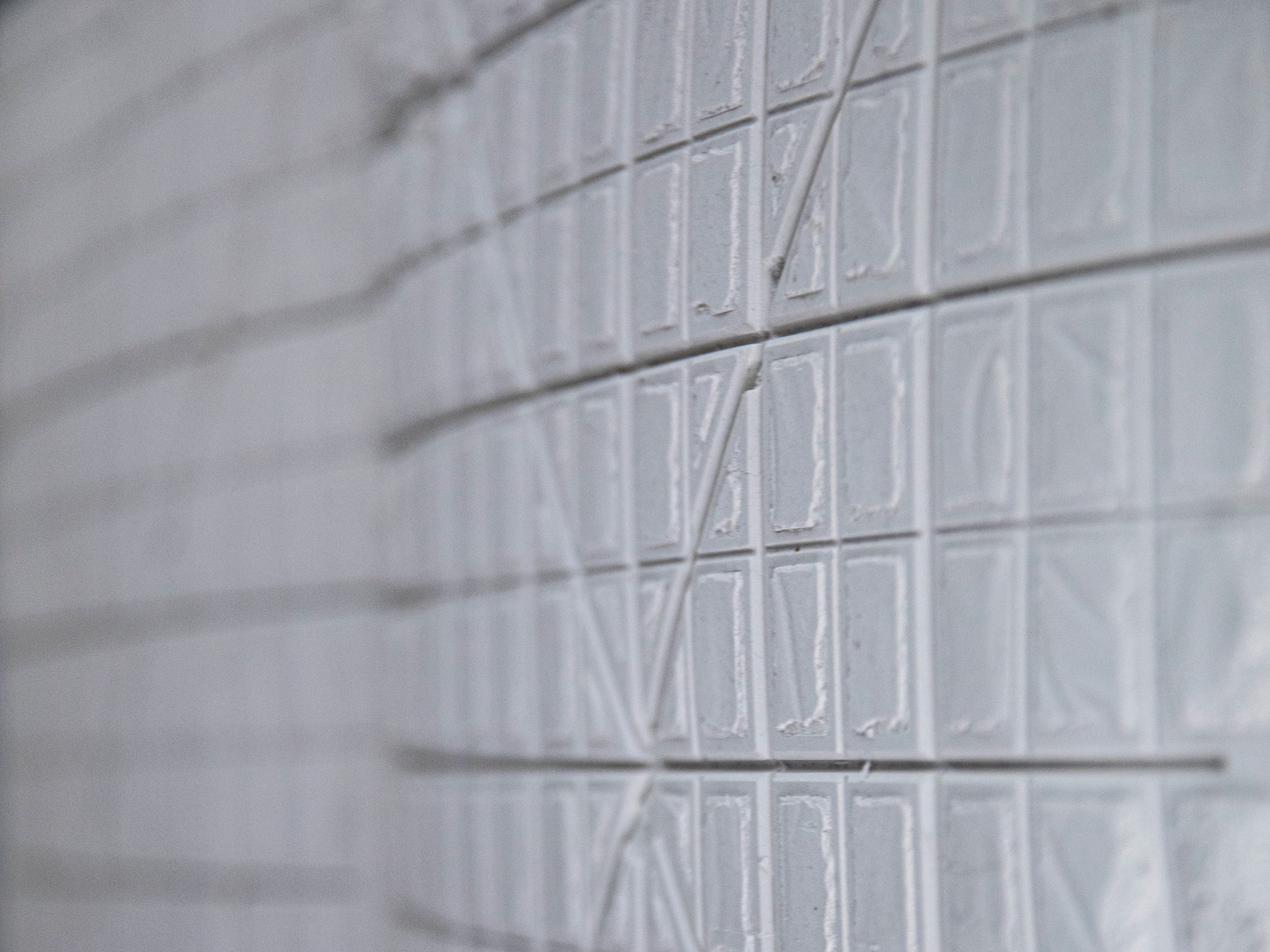Original title
La imagen proviene del interior de una fábrica de pantallas LED en Shanghái (China). Muestra el interior de un almacén donde los productos se acaban de manufacturar y empaquetar. Al fondo hay una pared con tres grandes ventanas de diferentes tamaños. Una cortina cubre una de las ventanas, las persianas están parcialmente bajadas. Fuera es de noche. En el centro de la imagen encontramos una pantalla LED encendida de grandes dimensiones. Está colocada en posición horizontal, descansa sobre una mesa. No proyecta ninguna imagen; su superficie es blanca, se intuye el dibujo de una cuadrícula. La pantalla está rodeada de mesas de gran formato sobre las que descansan papeles y cajas de diferentes tamaños. Dentro de algunas de las cajas, las hojas transparentes de plástico parecen asomarse. Cerca de la pantalla hay una mujer joven. De pie, mira fijamente hacia la cámara fotográfica a través de unas gafas gruesas. La pantalla ilumina su cara y parcialmente su cuerpo, semioculto tras la mesa. Lleva una chaqueta de deporte verde con hombreras oscuras. Una de sus manos toca la pantalla y la otra, su vientre.
Ensayo audiovisual, 2023
Like a bright silvery mist
Pia Cordero
‘Oh, Kitty! how nice it would be if we could only get through into Looking-glass House! I’m sure it’s got, oh! such beautiful things in it! Let’s pretend there’s a way of getting through into it, somehow, Kitty. Let’s pretend the glass has got all soft like gauze, so that we can get through’ (Through the Looking-Glass). In Lewis Carroll’s story, little Alice passes through a mirror that connects two isomorphic realities, with the there of her house in one the exact reverse of the here of the other. Both realities are mediated by a mirror that becomes a ‘bright silvery mist’ as she moves to the other side of the glass. Like Alice through the looking-glass, Julia Varela’s Lightduress visual research addresses the question of the limits of technological devices, as well as their materiality and undermining of otherness relationships. An investigation that encompasses historiographical and even archaeological aspects of the frictions created by using technological devices that we see embodied in The photo was taken inside a factory where LED screens are made in Shanghai, China (2023). An installation in which the artist explores the structure of the device that reproduces and simultaneously derealises images. The derealisation of an image does not imply its extinction, but rather its exemption from any affective connection with carnal, affective reality.
The grid pattern covering the surfaces of the transparent glass plates of the installation has been produced by the artist herself. As part of her proposal for Espai Rampa, Varela has designed a series of technical strategies that have helped her to employ both manual and automatic devices through which she has etched and abraded each glass surface to its structural limit. Arranged on industrial containers that act as plinths, the glass has been intervened by means of millimetric incisions and cuts, emulating the grid engraving of optical methacrylate sheets, better known as the LED Guide Panels that make up LED screens. The breaks and cracks that can be observed on the glass plates arise not from random gestures, but from exactly calculating the lines, tending to diminish the firmness of the material. It is revealing that, like a geographical grid, the grids of the glass plates confront us with the question of the morphology of affects, in which the immediacy of the now prevents us from seeing the ‘other’ in the image.
In order to investigate this issue, the artist began to interact with a company that marketed optical methacrylate in China. She requested technical information and images of optical methacrylate screens from Sunny Zhu, a sales agent from Shanghai Yihui Photoelectric Technology Co., Ltd. Among the images she received were those of an enigmatic woman who broke the visual aridity of the product sales catalogues. The woman, perhaps a factory worker, appeared beside a screen. In several images, she seemed to move her body closer to wipe the screen, sometimes staring at the camera, sometimes simply pressing her belly with one of her hands. The sensibility conveyed by the woman’s pose and gestures asserted itself against the technological derealisation that prevents us from establishing the most fundamental otherness, namely that of the passage of time, whenever our experience fades and shapes what we call memory. As the Red Queen says to Alice: “It’s a poor sort of memory that only works backwards,” the Queen remarked. “What sort of things do you remember best?” Alice ventured to ask. “Oh things that happened the week after next,” the Queen replied in a careless tone.’ This exchange demonstrates that the other side of the mirror is an absolute without geography. A continuum that prevents us from stopping time and thus its timescale. Faced with such an inflection, already grounded by the format of immediacy and rapid obsolescence that omits spatio-temporal distances, Lightduress expands on that distance that allows us to establish otherness through a visual surface offering no other images than those of grids. Faced with this continuum without topography that diminishes subjective memory, it is worth asking how we can think about the future if the experience of the present tends to become diluted as in the continuum on the other side of the mirror? How can we stop this continuum that makes power relations invisible, as if time and space and their accompanying morphology were freed from all attempts to dominate?
